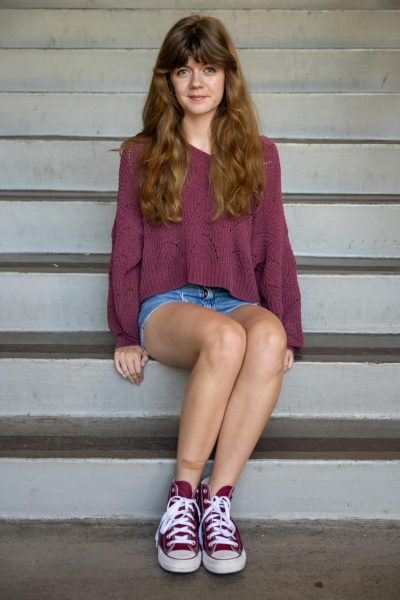Picture this: you’re a child sitting on your couch, and you see your favorite character from the book your mom reads to you before bed on the TV screen. Winnie the Pooh, but bloodied and deranged. You’re not sure what you’re seeing, you’re not sure if it’s real or fake. You don’t know what to believe. All you can do is run up to your room and hide under your covers.
Films rooted in childhood nostalgia with a dark twist have become more and more common as years go by.
“Five Nights at Freddy’s” is the most recent example of this. A teddy-bear-like main character, and a colorful birthday party as the location makes it an eye-catching movie for children who will automatically assume it won’t give them nightmares. Hidden beneath the front of confetti and cupcakes is a creepy, bloody, and mature storyline that only adults could legitimately process and enjoy.
Although wooden blocks and creepy dolls may be unsettling to adults, children don’t know the difference between their playroom toys and “Annabelle,” until they watch more of the trailer than they should.
Children have trouble differentiating between reality and fantasy, and the earlier you show them horror movies with violence or gore the more blurry the lines get between the two, confusing the adolescent further.
Pulse TMS, an organization who invented a shock therapy treatment that can reduce symptoms of depression, argues that “young children may need to avoid these films altogether until they develop the cognitive capacity to recognize them as being make-believe.” This further proves that children shouldn’t be shown graphic media until they understand that it can’t physically hurt them.
If the child is exposed to violence and horror films too young it can set them up for anxiety later in life.
A study performed by Joanne Cantor, who was a professor at the University of Wisconsin-Madison, discovered that there’s long lasting trauma and effects of being exposed to horror too young, “90 percent of the study’s participants (more than 150 college students at Michigan and Wisconsin) reported a media fright reaction from childhood or adolescence. Moreover, about 26 percent still experience a ‘residual anxiety’ today” The genre may also cause children to suffer from aggressive behaviors as well as poor sleeping habits.
In a study done by Dr. Dyhan Singh, an assistant professor in India, data shows that children who have witnessed a graphic scene in a horror movie, 89 percent of the time it has resulted in a fear of the dark. Out of the children who were surveyed, 35 percent said that they don’t sleep well for several nights.
In some cases horror movies can be beneficial to emotional development. According to Stanford Medicine – Children’s Health, “You need the experience of mastering fear as a child to be competent as an adult.” It can expose them to dangers and increase self awareness. If a child has developed a specific phobia, it’s easier to face that aversion through a horror film and behind the safety of a screen.
Small doses of fear in youth can build a tolerance for it. From an article by Healthdirect, they claim that to face your fear you should “Gradually, increase your exposure until you can tolerate the uncomfortable emotions, such as fear, anxiety and distress.” But, very few horror movies are tame enough to keep their panic manageable while they are being exposed, which is why it’s ideal to avoid the possibility of that turmoil in the first place.
However some aspects of the brutal genre are unavoidable.
Halloween’s over, but advertisements of the newest scares still take to the screen, even on children’s channels. The age ratings of movies are sometimes understated, and most parents don’t have time to watch it by themselves to make sure it’s appropriate. What’s the point of age ratings if parents can’t trust them?
‘Where The Wild Things Are’, a movie based on a children’s book, is rated PG to target the original audience. However, the movie talks about mature themes like abandonment and being eaten. Not to mention the visually terrifying monsters written to be manipulative and hot headed. If the movie wasn’t based on a children’s book, would the rating still be PG?
If production companies accurately represent instead of downplay what is portrayed on screen, parents could safely assume that the entertainment is appropriate for their child.
Films such as J
aws, the gorey cult classic that even adults get squeamish about, is rated PG. The trailer paints a graphic picture of a boy being eaten, all that’s left is a yellow raft with blood dying the surrounding water.
Unskippable trailers presenting bloody images leaves kids covering their eyes in hopes that they forget about the scene before their next trip to the beach.
Children should be protected, not taken advantage of for viewership or money.




